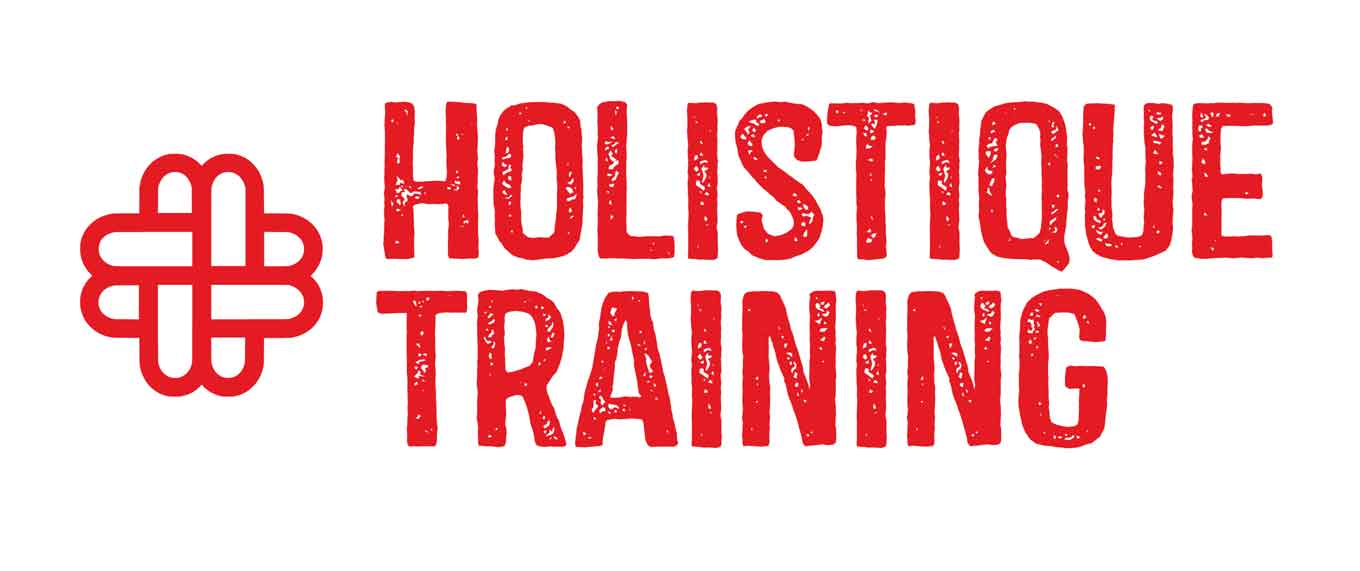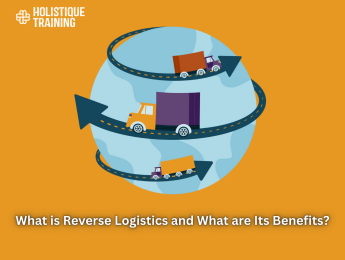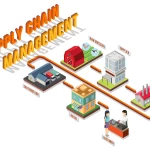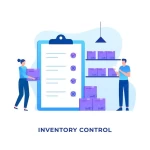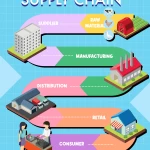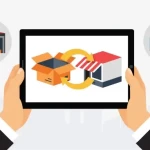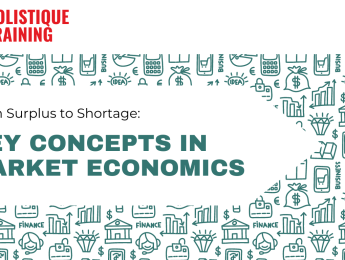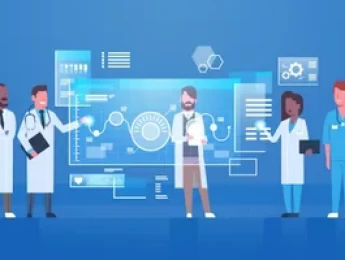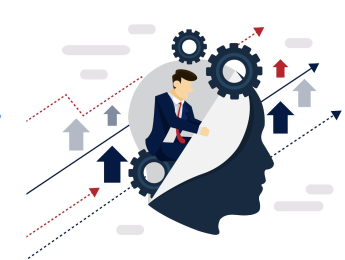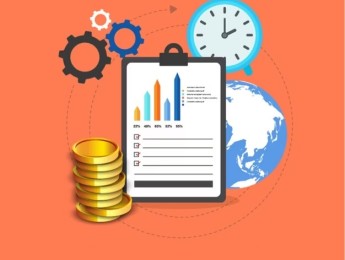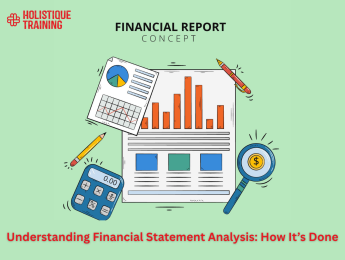- Table of Contents
- Introduction
- What is Reverse Logistics?
- The 3 Rs of Reverse Logistics
- Returns:
- Repair:
- Recycling:
- Types of Reverse Logistics
- 1. Returns Management
- 2. Remanufacturing and Repair
- 3. Refurbishment
- 4. Unsold Goods
- 5. End-of-Life (EOL) Management
- 6. Packaging Management
- 7. Delivery Failures
- 8. Green Reverse Logistics
- Reverse Logistics vs. Traditional Logistics: What’s the Difference?
- Benefits of Reverse Logistics
- Cost Savings
- Enhanced Customer Satisfaction
- Sustainability
- Improved Inventory Management
- Competitive Advantage
- Regulatory Compliance
- Innovation and Product Improvement
- The Process of Reverse Logistics
- 1. Return Authorization
- 2. Product Inspection
- 3. Restocking or Repair
- 4. Inventory Management
- 5. Customer Communication
- 6. Data Analysis
- How to Optimize Reverse Logistics
- 1. Develop Clear Return Policies
- 2. Invest in Technology
- 3. Enhance Product Inspection Processes
- 4. Implement Efficient Restocking and Repair Processes
- 5. Monitor Key Performance Indicators (KPIs)
- 6. Foster Strong Customer Communication
- 7. Embrace Sustainability Practices
- 8. Continuous Improvement
- Conclusion
Introduction
Reverse logistics is an essential yet often overlooked aspect of supply chain management. This blog post delves into the intricacies of reverse logistics, exploring its definition, significance, and the various components that make it a vital part of modern business operations. By examining the three Rs of reverse logistics, the different types involved, and how it contrasts with traditional logistics, we will uncover the myriad benefits it offers. Additionally, we will discuss the process of reverse logistics and strategies for optimizing it through technology and automation. Finally, we will conclude by emphasizing the importance of reverse logistics in today’s economy.
What is Reverse Logistics?
Reverse logistics refers to the process of moving goods from their final destination back to the manufacturer or distributor for the purpose of return, repair, remanufacturing, recycling, or disposal. Unlike traditional logistics, which focuses on the flow of products from manufacturers to consumers, reverse logistics emphasizes the backward flow of products. This process is crucial for managing returns, minimizing waste, and maximizing resource recovery.
The rise of e-commerce has significantly impacted reverse logistics, as online shopping has led to increased return rates. Customers expect hassle-free return policies, prompting businesses to develop efficient systems for handling returned goods. Reverse logistics not only addresses these customer demands but also plays a pivotal role in promoting sustainability by reducing waste and encouraging recycling.
The 3 Rs of Reverse Logistics
The concept of reverse logistics can be encapsulated in the three Rs: Returns, Repair, and Recycling.
Returns:
This aspect involves managing the process of customers returning products for various reasons, such as defects, dissatisfaction, or incorrect orders. Effective returns management is crucial for maintaining customer satisfaction and loyalty.
Repair:
Repair focuses on fixing defective products to restore them to their original condition. This process not only extends the life of products but also reduces the need for new manufacturing, thereby conserving resources.
Recycling:
Recycling involves reclaiming materials from products that have reached the end of their life cycle. This process minimizes waste and promotes sustainability by reintroducing materials into the production cycle.
Together, these three Rs form the foundation of reverse logistics, highlighting its role in enhancing customer satisfaction and promoting environmental responsibility.
Types of Reverse Logistics
Reverse logistics encompasses various activities and processes. Understanding these types is essential for businesses looking to implement effective reverse logistics strategies:
1. Returns Management
Returns management is the backbone of reverse logistics, focusing on the systematic handling of returned products. This includes:
- Return Authorization: Establishing clear policies for customers to initiate returns, which helps streamline the process and set expectations.
- Processing Returns: Efficiently receiving and inspecting returned items to determine their condition and potential next steps (restocking, refurbishing, or recycling).
- Customer Communication: Keeping customers informed about the status of their returns, refunds, or exchanges, which enhances customer satisfaction and trust.
Effective returns management not only improves operational efficiency but also helps retain customers by providing a seamless return experience.
2. Remanufacturing and Repair
Remanufacturing and repair involve restoring used products to a like-new condition. This process includes:
- Disassembly: Breaking down the product into its component parts to assess damage and identify reusable components.
- Cleaning and Refurbishing: Cleaning parts, replacing defective components, and upgrading features to meet current standards.
- Reassembly and Testing: Putting the product back together and conducting rigorous testing to ensure it meets quality standards before reselling.
This type of reverse logistics is particularly prevalent in industries like electronics and automotive, where remanufactured products can be sold at a lower price point while still offering significant value to consumers.
3. Refurbishment
Refurbishment is closely related to remanufacturing but typically involves less extensive repairs. Key aspects include:
- Upgrading: Enhancing older models with new technology or features, making them more appealing to consumers.
- Cosmetic Repairs: Fixing minor defects such as scratches or dents to improve the product's aesthetic appeal.
- Quality Assurance: Ensuring that refurbished products meet specific quality standards before they are returned to the market.
Refurbished products often attract budget-conscious consumers looking for quality at a lower price, making this an important segment of reverse logistics.
4. Unsold Goods
Managing unsold inventory is crucial for minimizing losses and optimizing resource use. This involves:
- Discounting: Offering discounts on unsold products to encourage sales and reduce excess inventory.
- Donation: Partnering with charitable organizations to donate unsold goods, which can enhance corporate social responsibility and improve brand image.
- Recycling: When products cannot be sold or donated, recycling materials helps recover value and minimize environmental impact.
Effective management of unsold goods not only reduces waste but also allows companies to recover some costs associated with unsold inventory.
5. End-of-Life (EOL) Management
EOL management focuses on products that have reached the end of their useful life. This includes:
- Safe Disposal: Implementing environmentally responsible disposal methods to minimize harm to the environment.
- Recycling Programs: Developing programs to reclaim valuable materials from EOL products, such as metals, plastics, and electronics.
- Compliance: Ensuring that disposal practices comply with local and international regulations regarding waste management and environmental protection.
By effectively managing EOL products, companies can contribute to sustainability efforts and reduce their environmental footprint.
6. Packaging Management
Packaging management is an often-overlooked aspect of reverse logistics that focuses on:
- Reusing Packaging: Implementing systems to collect and reuse packaging materials, such as boxes and pallets, to reduce waste and costs.
- Recycling Materials: Establishing processes for recycling packaging materials, which can help companies meet sustainability goals and regulatory requirements.
- Design for Reusability: Designing packaging that is easy to reuse or recycle, which can enhance the overall efficiency of the supply chain.
Effective packaging management not only reduces waste but also contributes to cost savings and improved brand reputation.
7. Delivery Failures
Handling delivery failures is an essential component of reverse logistics, involving:
- Rescheduling Deliveries: Implementing systems to quickly reschedule deliveries that could not be completed, ensuring customer satisfaction.
- Processing Returns: Managing the return of undeliverable items, which may include coordinating with customers to arrange for returns or exchanges.
- Analyzing Delivery Data: Utilizing data analytics to identify patterns in delivery failures, which can inform improvements in logistics and customer service.
By addressing delivery failures effectively, companies can enhance customer satisfaction and reduce costs associated with failed deliveries.
8. Green Reverse Logistics
Green reverse logistics emphasizes environmentally friendly practices within the reverse logistics process. Key components include:
- Sustainable Practices: Implementing initiatives to minimize waste, such as reducing packaging materials and optimizing transportation routes to lower carbon emissions.
- Recycling and Reuse: Focusing on reclaiming materials and reusing products to reduce the overall environmental impact of the supply chain.
- Compliance with Environmental Regulations: Ensuring that all reverse logistics practices align with local and international environmental laws and standards.
Adopting green reverse logistics not only benefits the environment but also enhances a company's reputation and appeal to environmentally conscious consumers.
By understanding these various types of reverse logistics, businesses can tailor their strategies to effectively manage product returns and minimize waste, ultimately leading to improved operational efficiency and enhanced customer satisfaction.
Reverse Logistics vs. Traditional Logistics: What’s the Difference?
While both reverse logistics and traditional logistics are integral to supply chain management, they differ significantly in their objectives and processes.
- Direction of Flow: Traditional logistics focuses on the forward flow of goods from producers to consumers, while reverse logistics emphasizes the backward flow of goods from consumers to producers.
- Objectives: The primary goal of traditional logistics is to deliver products efficiently and cost-effectively to customers. In contrast, reverse logistics aims to recover value from returned or unused products and minimize waste.
- Complexity: Traditional logistics processes are often more straightforward, involving predictable supply chain movements. Reverse logistics, however, can be more complex due to the variability in returns and the need to assess the condition of returned products.
- Customer Interaction: Traditional logistics typically involves limited customer interaction, while reverse logistics requires direct engagement with customers to facilitate returns and manage expectations.
Understanding these differences is crucial for businesses seeking to optimize their logistics strategies and improve overall supply chain performance.
The following table summarizes these differences:
Aspect | Reverse Logistics | Traditional Logistics |
Direction of Flow | Forward flow from producers to consumers | Backward flow from consumers to producers |
Objectives | Deliver products efficiently and cost-effectively | Recover value from returned products and minimize waste |
Complexity | More straightforward processes with predictable movements | More complex due to variability in returns and product conditions |
Customer Interaction | Limited interaction primarily at point of sale | Direct engagement with customers for returns and inquiries |
Focus on Sustainability | Generally less emphasis on sustainability | Strong focus on recycling, waste reduction, and environmental responsibility |
Benefits of Reverse Logistics
Implementing effective reverse logistics strategies offers numerous benefits for businesses and the environment:
Cost Savings
One of the most compelling benefits of reverse logistics is the potential for significant cost savings. This can be achieved through:
- Value Recovery: By refurbishing or remanufacturing returned products, companies can recover value that would otherwise be lost. This process allows businesses to resell items at a lower price while still achieving a profit margin.
- Reduced Waste Disposal Costs: Efficient reverse logistics processes minimize the volume of waste sent to landfills, thereby reducing disposal costs. Companies can save money on waste management fees and potentially generate revenue from recycling materials.
- Inventory Management: Effective returns management helps businesses maintain optimal inventory levels. By analyzing return trends, companies can make informed decisions about production and purchasing, reducing excess inventory costs.
Enhanced Customer Satisfaction
Customer satisfaction is critical to long-term business success, and reverse logistics plays a vital role in this area:
- Hassle-Free Returns: A well-structured returns process enhances the customer experience by making it easy for consumers to return products. This convenience fosters trust and encourages repeat purchases.
- Improved Communication: Keeping customers informed about the status of their returns and refunds builds transparency and strengthens relationships. Clear communication can mitigate frustration and enhance customer loyalty.
- Quality Assurance: By efficiently processing returns and ensuring that products are in good condition before resale, companies can maintain high quality standards, leading to increased customer satisfaction.
Sustainability
As environmental concerns continue to rise, businesses are increasingly recognizing the importance of sustainable practices. Reverse logistics contributes to sustainability in several ways:
- Waste Reduction: By facilitating the reuse and recycling of products, reverse logistics helps minimize waste. This aligns with global efforts to reduce landfill contributions and promote a circular economy.
- Resource Conservation: The remanufacturing and refurbishment processes reclaim valuable materials, reducing the need for new raw materials. This conserves natural resources and decreases the environmental impact associated with manufacturing.
- Compliance with Regulations: Many regions have strict environmental regulations regarding waste disposal and recycling. Implementing reverse logistics helps businesses comply with these regulations, avoiding potential fines and enhancing their corporate social responsibility profile.
Improved Inventory Management
Effective reverse logistics processes lead to better inventory management, which is crucial for operational efficiency:
- Data-Driven Insights: Analyzing return data enables companies to identify trends and patterns, informing inventory decisions. This insight helps businesses anticipate demand and adjust stock levels accordingly.
- Reduced Stockouts and Overstock: By understanding return rates and customer preferences, companies can optimize their inventory levels, reducing the likelihood of stockouts or overstock situations. This balance enhances overall operational efficiency.
- Streamlined Operations: Efficient returns management processes help streamline operations, allowing businesses to focus on core activities rather than being bogged down by excess inventory or unresolved returns.
Competitive Advantage
In today’s competitive market, businesses that excel in reverse logistics can differentiate themselves from their competitors:
- Enhanced Brand Reputation: Companies that prioritize sustainability and customer satisfaction through effective reverse logistics can build a positive brand image. Consumers are increasingly drawn to brands that demonstrate environmental responsibility and excellent customer service.
- Attracting Eco-Conscious Consumers: As environmental awareness grows, more consumers seek out businesses that prioritize sustainable practices. A strong reverse logistics program can attract these consumers and foster brand loyalty.
- Adaptability and Resilience: Businesses with robust reverse logistics systems are better equipped to adapt to changing market conditions and consumer preferences. This agility can be a significant advantage in a rapidly evolving marketplace.
Regulatory Compliance
As governments worldwide implement stricter regulations regarding waste management and environmental protection, reverse logistics becomes essential for compliance:
- Adherence to Environmental Laws: Implementing reverse logistics practices helps businesses comply with laws governing waste disposal, recycling, and product lifecycle management. This reduces the risk of legal issues and associated penalties.
- Sustainability Reporting: Many companies are now required to report on their sustainability efforts. A strong reverse logistics program provides valuable data and metrics that can be included in sustainability reports, demonstrating commitment to responsible practices.
- Risk Mitigation: By proactively managing returns and ensuring compliance with regulations, businesses can mitigate risks associated with non-compliance, including fines, lawsuits, and reputational damage.
Innovation and Product Improvement
Reverse logistics can also drive innovation and product improvement:
- Feedback Loop: Returns often provide valuable insights into product performance and customer preferences. Analyzing the reasons for returns can inform product design and development, leading to improved offerings.
- Market Adaptation: Understanding return trends allows companies to adapt their product lines to better meet consumer needs. This responsiveness can lead to the development of new products that align with market demands.
- Continuous Improvement: The iterative nature of reverse logistics encourages businesses to continuously evaluate and improve their processes, leading to greater efficiency and effectiveness over time.
In summary, the benefits of reverse logistics extend far beyond simple cost savings. By enhancing customer satisfaction, promoting sustainability, improving inventory management, and providing a competitive edge, effective reverse logistics strategies can significantly impact a company's bottom line and reputation. As businesses continue to navigate the complexities of the modern marketplace, investing in reverse logistics will be crucial for long-term success and resilience.
The Process of Reverse Logistics
The reverse logistics process involves several key steps, each critical for ensuring efficiency and effectiveness:
1. Return Authorization
The reverse logistics process begins when a customer initiates a return. This step is crucial for setting the stage for a smooth return experience. Key elements include:
- Clear Return Policies: Establishing well-defined return policies helps customers understand the conditions under which returns are accepted. This includes information on time frames, acceptable product conditions, and any associated costs (e.g., return shipping fees).
- Return Request Submission: Customers typically submit a return request through an online portal, customer service line, or physical store. This request should capture essential information such as order number, reason for return, and product condition.
- Authorization Process: Once a return request is received, it must be reviewed and authorized. Automated systems can expedite this process by quickly assessing eligibility based on predefined criteria, allowing for faster processing times.
2. Product Inspection
Upon receiving the returned product, the next step is to conduct a thorough inspection. This is a critical phase for determining the product's condition and potential next steps. Important aspects include:
- Condition Assessment: Inspectors evaluate the returned item to determine whether it is in a resalable condition, requires repair, or should be recycled or disposed of. Common criteria include functionality, physical appearance, and completeness (e.g., original packaging and accessories).
- Documentation: Proper documentation of the inspection results is essential for tracking purposes. This includes recording the product condition, any defects found, and the reason for the return. This data can inform future product improvements and inventory management decisions.
3. Restocking or Repair
Based on the inspection results, the returned product will either be restocked for resale, sent for repair or refurbishment, or designated for recycling or disposal. This phase involves:
- Restocking: If the product is in good condition, it may be cleaned, repackaged, and returned to inventory for resale. This process often includes updating inventory records to reflect the product's availability.
- Repair and Refurbishment: Items that are damaged but still have repairable components may be sent to a repair facility. This process includes disassembly, cleaning, replacing defective parts, and conducting quality checks before the item is resold.
- Recycling and Disposal: For products that cannot be repaired or resold, environmentally responsible disposal methods should be employed. This includes recycling materials where possible, ensuring compliance with local regulations regarding waste management.
4. Inventory Management
Effective inventory management is crucial during the reverse logistics process. This step involves:
- Tracking Returns: Implementing a robust tracking system allows businesses to monitor the status of returned products throughout the reverse logistics process. This visibility helps manage inventory levels and reduces the risk of stockouts or overstock situations.
- Adjusting Inventory Levels: Analyzing return data can inform inventory decisions, allowing companies to adjust stock levels based on trends and customer preferences. This proactive approach helps optimize inventory management and reduce carrying costs.
- Integration with Forward Logistics: Integrating reverse logistics with forward logistics ensures a seamless flow of information and products. This integration allows businesses to better manage overall supply chain dynamics and respond effectively to changing consumer demands.
5. Customer Communication
Maintaining clear communication with customers throughout the reverse logistics process is essential for enhancing satisfaction and trust. Key components include:
- Return Status Updates: Keeping customers informed about the status of their returns, including receipt confirmation, inspection results, and refund processing, fosters transparency and reduces anxiety.
- Feedback Collection: Gathering feedback from customers about their return experience can provide valuable insights for improving processes. This feedback loop helps identify areas for enhancement and demonstrates a commitment to customer service.
- Post-Return Engagement: Following up with customers after the return process can help rebuild relationships and encourage repeat purchases. This might include offering discounts on future purchases or soliciting reviews of the returned product.
6. Data Analysis
Data analysis is a crucial step in the reverse logistics process that helps businesses gain insights into return trends and customer behavior. Important aspects include:
- Identifying Patterns: Analyzing return data can reveal patterns related to specific products, categories, or customer segments. This information can inform product development, marketing strategies, and inventory management decisions.
- Continuous Improvement: Leveraging data analytics allows companies to continuously refine their reverse logistics processes. By identifying inefficiencies or recurring issues, businesses can implement changes that enhance operational effectiveness and customer satisfaction.
- Reporting: Regularly generating reports on return metrics, such as return rates, reasons for returns, and processing times, provides valuable insights for management. These reports can inform strategic decisions and help align reverse logistics with overall business goals.
By following these steps, companies can streamline their reverse logistics processes, ultimately improving efficiency and customer satisfaction.
How to Optimize Reverse Logistics
Optimizing reverse logistics is essential for maximizing efficiency and reducing costs. Here are some strategies businesses can implement:
1. Develop Clear Return Policies
Establishing clear and concise return policies is the foundation of an effective reverse logistics strategy. This involves:
- Transparency: Clearly communicate the terms and conditions of returns to customers, including time frames, acceptable product conditions, and any costs associated with returns. Transparency helps manage customer expectations and reduces confusion.
- Flexibility: Consider offering flexible return options, such as extended return windows or free return shipping for certain products. This flexibility can enhance customer satisfaction and encourage repeat purchases.
- Simplified Processes: Streamline the return process by minimizing the steps required for customers to initiate a return. Implementing user-friendly online return portals can facilitate smoother transactions.
2. Invest in Technology
Leveraging technology is crucial for optimizing reverse logistics. Key areas to focus on include:
- Automated Return Management Systems: Implementing automated return management systems can streamline return authorization, tracking, and processing. This reduces manual errors and accelerates the overall returns process.
- Data Analytics Tools: Utilize data analytics tools to monitor return trends and customer behavior. Analyzing data can provide insights into common return reasons, enabling businesses to address underlying issues and improve product offerings.
- Inventory Management Software: Advanced inventory management systems can help track returned products and integrate them into the overall inventory. This ensures accurate stock levels and facilitates efficient restocking or refurbishment processes.
3. Enhance Product Inspection Processes
Efficient product inspection is critical for determining the next steps for returned items. To optimize this process:
- Standardized Inspection Protocols: Develop standardized protocols for inspecting returned products. This ensures consistency and accuracy in assessing product conditions, which is essential for making informed decisions about restocking or repair.
- Training for Inspectors: Provide comprehensive training for staff responsible for product inspections. Well-trained personnel can identify issues more effectively and make better decisions regarding product disposition.
- Use of Technology: Consider using technology, such as barcode scanning or RFID systems, to streamline the inspection process. These tools can enhance accuracy and speed up the assessment of returned items.
4. Implement Efficient Restocking and Repair Processes
Once products are inspected, optimizing the restocking and repair processes is essential for maximizing value recovery:
- Quick Turnaround Times: Aim for quick turnaround times for restocking or repairing returned products. Efficient processes can reduce the time it takes for items to return to inventory, increasing the potential for resale.
- Refurbishment Programs: Establish refurbishment programs for products that can be repaired and resold. This not only recovers value but also contributes to sustainability efforts by reducing waste.
- Clear Workflow: Create clear workflows for handling returned products based on their condition. This ensures that items are processed efficiently and appropriately, whether they are restocked, repaired, or recycled.
5. Monitor Key Performance Indicators (KPIs)
Tracking and analyzing KPIs is vital for assessing the effectiveness of reverse logistics processes. Important KPIs to monitor include:
- Return Rate: Measure the percentage of products returned compared to total sales. A high return rate may indicate issues with product quality or customer satisfaction that need to be addressed.
- Processing Time: Track the average time it takes to process returns from initiation to resolution. Reducing processing times can enhance customer satisfaction and operational efficiency.
- Cost per Return: Calculate the costs associated with processing returns, including shipping, inspection, and restocking. Identifying areas where costs can be reduced will improve profitability.
Table: Key Performance Indicators (KPIs) of Reverse Logistics
Key Performance Indicator | Description |
Return Rate | Percentage of products returned compared to total sales |
Processing Time | Average time taken to process returns from initiation to resolution |
Cost Per Return | Total costs associated with processing a return, including shipping and handling |
Customer Satisfaction Score | Measures customer satisfaction regarding the return process |
Restock Rate | Percentage of returned items that are restocked and resold |
6. Foster Strong Customer Communication
Effective communication with customers throughout the reverse logistics process is essential for enhancing satisfaction and trust:
- Proactive Updates: Keep customers informed about the status of their returns, including receipt confirmation, inspection results, and refund processing. Proactive communication reduces uncertainty and improves the customer experience.
- Feedback Mechanisms: Implement mechanisms for collecting customer feedback on their return experience. This feedback can provide valuable insights for improving processes and addressing customer concerns.
- Post-Return Engagement: Engage with customers after the return process to reinforce relationships. Consider sending follow-up emails or surveys to gather feedback and offer incentives for future purchases.
7. Embrace Sustainability Practices
Integrating sustainability into reverse logistics processes can enhance brand reputation and appeal to environmentally conscious consumers. In fact,a recent study revealed that 64% of US consumers are open to paying more for returns if it supports a more environmentally friendly shipping option. That said, here’s how you can be more sustainable with reverse logistics:
- Recycling Initiatives: Establish programs for recycling materials from returned products. This minimizes waste and supports environmental goals while potentially generating revenue from reclaimed materials.
- Eco-Friendly Packaging: Use sustainable packaging materials for shipping products to customers. This not only reduces environmental impact but also aligns with consumer preferences for eco-friendly practices.
- Sustainability Reporting: Regularly report on sustainability efforts related to reverse logistics. Transparency in sustainability initiatives can enhance brand credibility and attract customers who prioritize environmental responsibility.
8. Continuous Improvement
The optimization of reverse logistics should be an ongoing process. To foster continuous improvement:
- Regular Assessments: Conduct regular assessments of reverse logistics processes to identify areas for enhancement. This could involve reviewing performance metrics, customer feedback, and industry best practices.
- Cross-Functional Collaboration: Encourage collaboration between departments, such as logistics, customer service, and product development. Cross-functional teams can share insights and work together to improve reverse logistics strategies.
- Stay Informed: Keep abreast of industry trends and innovations in reverse logistics. Adopting new technologies and methodologies can help businesses stay competitive and improve efficiency.
By adopting these strategies, businesses can optimize their reverse logistics processes, leading to increased efficiency, reduced costs, and improved customer satisfaction.
Conclusion
Reverse logistics is an indispensable element of supply chain management that significantly impacts customer satisfaction, sustainability, and cost efficiency. Understanding the various types of reverse logistics, along with the distinctions between reverse and traditional logistics, allows businesses to craft effective strategies for managing returned products. This knowledge is crucial for navigating the complexities of today's market.
As e-commerce continues to expand and customer expectations evolve, the necessity for robust reverse logistics will only intensify. Companies that prioritize this area and invest in optimizing their reverse logistics processes will not only enhance their operational efficiency but also gain a competitive edge in the marketplace. By doing so, they contribute to a more sustainable and efficient economy, aligning their business practices with broader environmental goals.
Our course, Best Practices in Reverse Logistics, is designed to equip professionals with the insights and skills needed to excel in this critical area. Participants will learn best practices for managing returns, leveraging technology, and implementing effective communication strategies. By embracing the principles outlined in this course, businesses can enhance their reverse logistics operations, leading to improved customer experiences and reduced costs.
Investing in reverse logistics is not merely a business decision; it is a commitment to environmental stewardship and responsible supply chain practices. Join us in our course to harness the power of reverse logistics, ensuring that your organization not only thrives in a competitive landscape but also contributes positively to the planet. Together, we can create a win-win situation for businesses, customers, and the environment. Sign up today to take the first step toward mastering reverse logistics!
